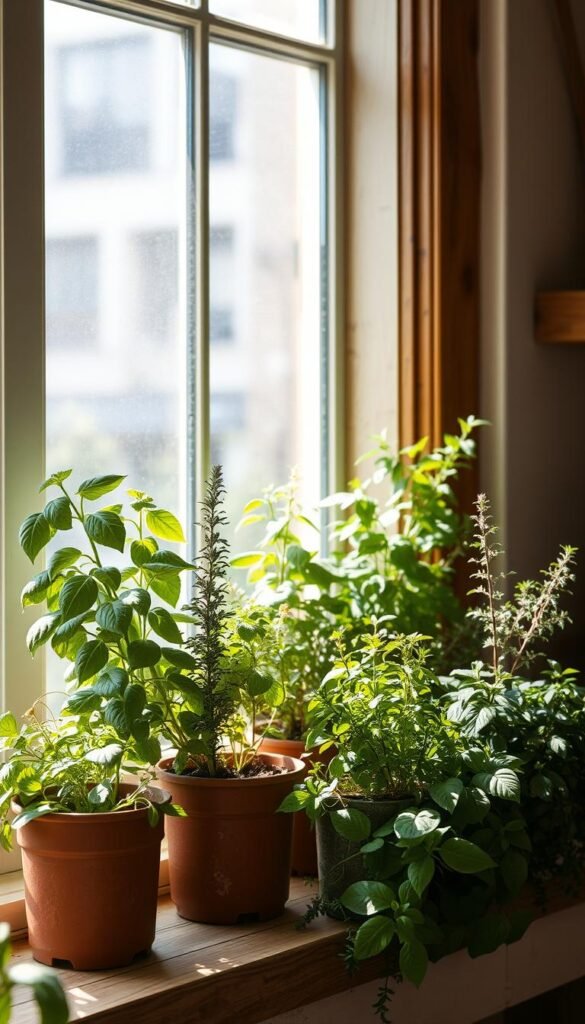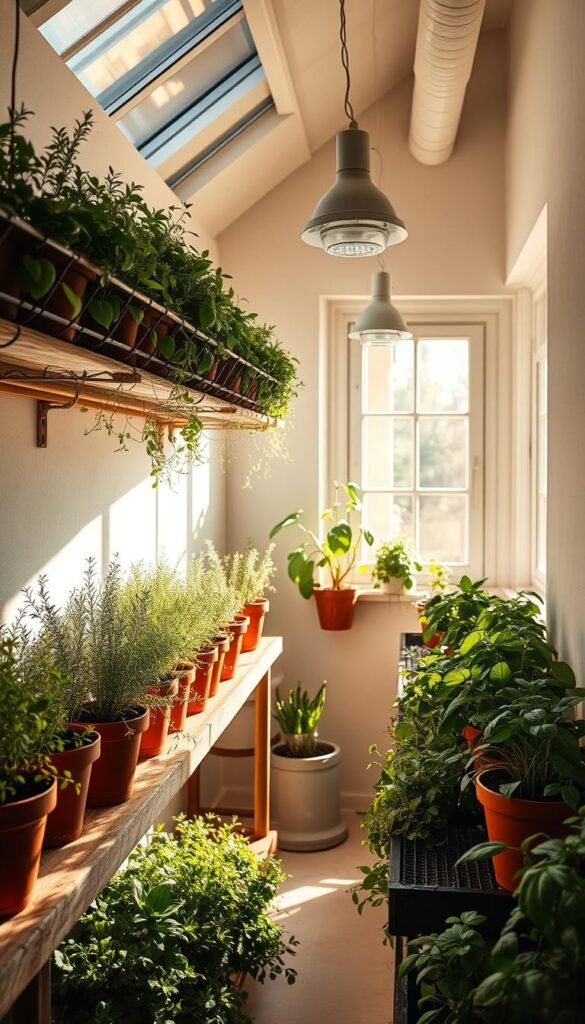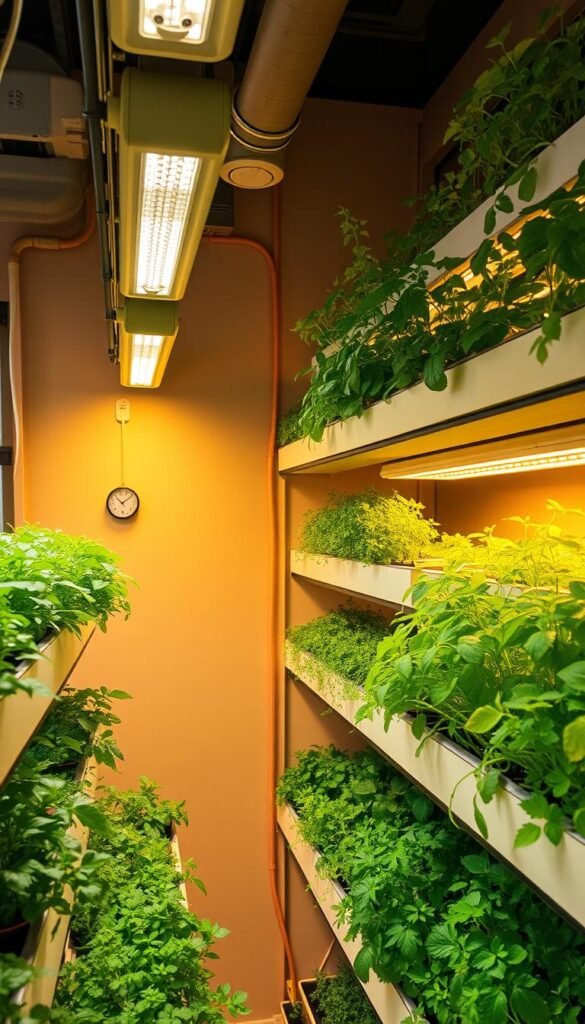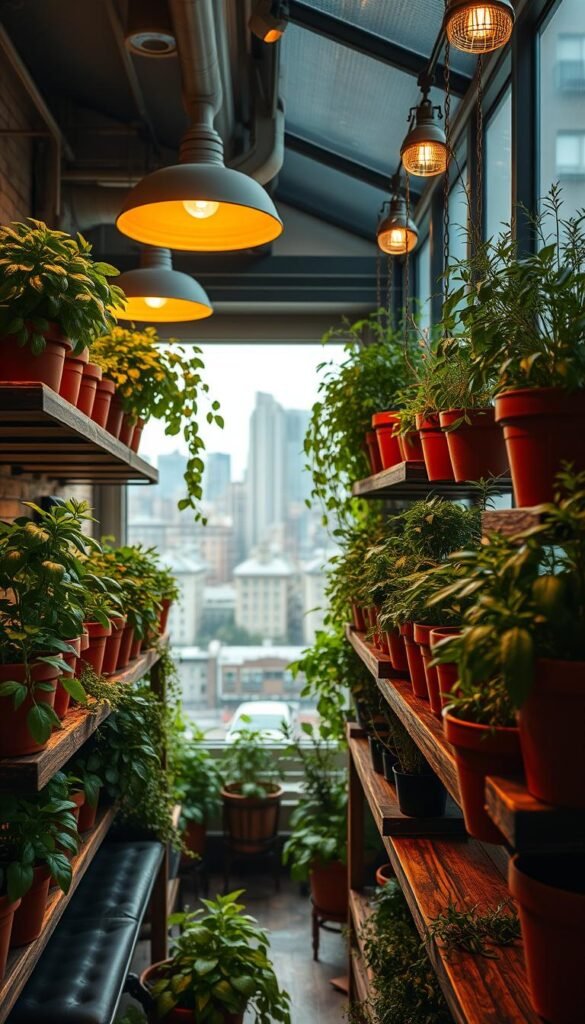Imagine stepping into your kitchen and snipping fragrant leaves straight from your own mini oasis. Whether you’re in a cozy apartment or a bustling city home, cultivating plants like basil, mint, or rosemary is simpler than you think. With just a sunny windowsill and a little care, you can enjoy vibrant flavors without relying on store-bought options that wilt too fast.
Even tight spaces can transform into lush green corners. Many urban dwellers use compact pots or vertical planters to maximize their area. Brands like Bonnie Plants® offer starter varieties that thrive inside, making it easy to begin your journey. No backyard? No problem!
Freshly picked ingredients elevate every meal, from morning omelets to evening pasta. You’ll notice the difference in taste—and your recipes will thank you. Plus, tending to your leafy companions adds a calming rhythm to daily life.
Ready to dive in? Let’s explore how to create a thriving setup that keeps your dishes bursting with flavor, no matter the season.
Understanding the Benefits of Indoor Herb Gardening

There’s nothing like adding just-picked cilantro to your guacamole while prepping dinner. A herb garden steps from your stove puts flavor at your fingertips—no last-minute grocery runs needed. Let’s explore why this setup works so well for busy lifestyles.
Freshness and Convenience in Your Kitchen
Snip what you need, when you need it. Unlike store-bought bundles that wilt in days, live plants keep leaves crisp and aromatic. Recipes gain depth from peak flavors—think rosemary-infused olive oil or basil brightening caprese salads moments after harvest.
Cost-effectiveness and Year-Round Availability
Why pay $3 for a handful of thyme you’ll use once? A single plant yields months of savings. No more tossing slimy parsley—just take what’s needed. Plus, snowstorms won’t disrupt your supply. With a sunny window, you’ll enjoy summer staples like mint even in January.
Small-space solutions make it practical. Compact pots or wall-mounted planters fit anywhere. Most varieties thrive with minimal care—just water and sunlight. Whether you’re in a studio or a townhouse, fresh flavors stay within reach.
Selecting the Ideal Herbs for Your Urban Kitchen

Ever wonder which leafy companions will flourish in your apartment’s nooks? Picking the right varieties turns your space into a flavor factory—no sprawling backyard required. Start with what you love to cook, then match those tastes to hardy plants built for indoor life.
Herbs That Thrive Indoors
Basil and parsley top the list for beginners. They’re fast growers that handle sunny windowsills well. Prefer something forgiving? Try thyme—it tolerates lower light and occasional forgetful watering.
Mint varieties like peppermint adapt surprisingly well to pots. Just give them their own container—they’ll crowd out neighbors if shared. For steady harvests, snip starter plants from local nurseries instead of seeds. You’ll skip weeks of waiting.
Stick to herbs you regularly use in recipes. Rosemary adds depth to roasted veggies, while cilantro sparks up salsas. A practical selection means less waste and more meals transformed by your kitchen garden.
Pro tip: Check labels for terms like “compact” or “dwarf” when shopping. These breeds stay manageable in tight spaces while packing the same punch as their outdoor cousins.
Optimizing Light for Maximum Herb Growth

Proper lighting transforms your leafy friends from surviving to thriving. While most varieties crave brightness, each has unique needs. Let’s break down how to create a sun-kissed environment—even when outdoor conditions aren’t ideal.
Choosing the Perfect Window Spot
South-facing windows steal the show, offering 6+ hours of daily sunlight—perfect for basil and rosemary. West-facing alternatives work well for mint or parsley, delivering gentler afternoon rays. Use a compass app to map your home’s sunniest spots.
| Window Direction | Daily Light Hours | Best For |
|---|---|---|
| South | 6-8 hours | Sun-loving plants |
| West | 4-6 hours | Moderate-light varieties |
| East | 3-5 hours | Delicate leaves |
Notice pale or leggy stems? That’s your green buddy begging for more rays. Rotate pots weekly so all sides get equal exposure. Clean windows regularly—dust blocks 40% of sunlight!
Supplementing with Grow Lights
Winter’s short days call for reinforcements. LED or fluorescent grow lights mimic natural spectrums, keeping flavors vibrant. Position them 6-12 inches above plants, running 12-14 hours daily.
Full-spectrum bulbs work best for herbs indoors. Use timers to automate cycles—consistency matters more than intensity. You’ll see richer leaf colors and faster growth within weeks.
Watch your leaves closely. Deep greens mean happiness. Yellowing? Adjust light distance or duration. With the right balance, you’ll harvest zesty flavors year-round.
Growing Herbs Indoors: Year-Round Fresh Flavor for Urban Kitchens

Urban living doesn’t mean sacrificing garden-fresh ingredients. With a compact setup, you’ll always have lively plants ready to elevate sandwiches, soups, and stir-fries. One home cook shared:
“My windowsill oregano outlasts winter better than my outdoor plot ever did—and I’ve stopped buying those plastic clamshells altogether.”
| Indoor-Grown | Store-Bought | |
|---|---|---|
| Lifespan | 3-6 months | 5-7 days |
| Cost per ounce | $0.30 | $2.50 |
| Flavor intensity | Peak freshness | Diminished |
City dwellers report fewer grocery trips and less food waste. “I use three times more cilantro now that it’s always within arm’s reach,” says Brooklyn resident Marisa T. Even a single potted basil becomes a flavor powerhouse—snip a leaf while pasta boils, and taste the difference.
Your space constraints can’t stop this green revolution. Wall planters, hanging baskets, and tiered stands let you grow upwards. Start small with one herb you love, then expand as confidence grows. Before long, you’ll wonder how you ever cooked without your personal kitchen allies.
Choosing Containers and Potting Mixes for Success
Your leafy allies’ health starts with what’s beneath the surface. The right containers and soil act like a cozy home and balanced diet—get this combo right, and your plants will reward you with lush growth.
Importance of Drainage and Material Choices
Drainage holes are non-negotiable. Without them, water pools at the bottom, inviting root rot. Pair your pots with plastic saucers—they’re lighter than clay and won’t stain surfaces when overflow happens.
Material matters too. Terra cotta breathes well but dries out faster—ideal for rosemary or thyme. Glazed ceramic retains moisture for basil lovers. Plastic is lightweight and budget-friendly, perfect for hanging setups. Match the pot to your watering habits!
Skip garden dirt—it’s too dense for indoor gardening. Instead, grab a fluffy mix like Miracle-Gro® Indoor Potting Mix. These blends drain quickly yet hold nutrients. One urban gardener shared:
“Switching to quality soil stopped my mint from turning yellow almost overnight.”
Repot when roots peek through drainage holes. Gently loosen the root ball and upgrade to a container 2 inches wider. Keep saucers clean to prevent mineral buildup. With smart containers and care, your plants thrive through seasons.
Managing Temperature and Humidity in Your Space

Your leafy greens thrive when their environment feels just right—like your favorite cozy sweater. Most varieties prefer the same temperature range you do: 65°F to 70°F. This makes your home an ideal habitat, as long as you watch for sneaky drafts or dry air.
Keeping Greens Happy Through the Seasons
Basil demands extra warmth—keep it away from chilly windows in winter. Run your hand near shelves or sills to detect cold spots. One gardener notes:
“Moving my oregano 6 inches from the glass stopped leaf drop immediately.”
Humidity Hacks for Dry Days
Winter’s heated air can crisp leaf edges. Try these simple fixes:
- Place pots on pebble-filled trays with water
- Group plants to create a moisture-sharing microclimate
- Use a compact humidifier set to 40-50% RH
Watch for slowed growth or yellowing—these signal environmental stress. Rotate herbs monthly to ensure even exposure. With slight adjustments, your green allies will flourish through every season.
Watering and Fertilizing: The Basics of Herb Care
Keeping your plants hydrated without drowning them is an art every urban gardener masters over time. The right amount makes roots strong and flavors bold—but one misstep can lead to limp leaves or worse. Let’s explore how to hit that sweet spot.
Finding the Right Balance
Test soil moisture by poking your finger down to the first knuckle. If it feels dry, it’s time to water. This simple trick prevents overwatering, which starves roots of oxygen. As one plant enthusiast shares:
“Learning to trust the finger test saved my basil from root rot last summer.”
| Care Factor | Frequency | Pro Tip |
|---|---|---|
| Watering | When topsoil dries | Use room-temperature water |
| Fertilizing | Every 4-6 weeks | Half-strength liquid food |
| Soil Check | Monthly | Refresh top 1″ of mix |
During active growth months, feed plants with diluted liquid fertilizer. Winter calls for lighter meals—reduce feeding by half. Pots with drainage holes are non-negotiable; they let excess water escape while keeping roots happy.
Adjust routines as seasons change. Dry indoor heat in February? Water slightly more often. Humid July days? Ease up. Your gardening experience grows with each adjustment, turning guesswork into confident care.
Innovative Indoor Growing Setups and Tools
Welcome to the future of kitchen gardening, where tech meets thyme in your living space. Modern solutions let you bypass traditional challenges like limited sunlight or messy soil. Whether you’re nurturing delicate chives or robust basil, today’s gadgets make grow indoors efforts sleek and nearly effortless.
Hydroponic Systems and Modern Gadgets
Ditch the dirt with self-watering hydroponic kits. The Miracle-Gro® Twelve™ system, for example, uses nutrient-rich water to fuel faster growth. One user raves:
“My indoor herb setup now fits on a bookshelf—and I harvest twice as much compared to soil pots.”
Timed LED grow lights solve low-light dilemmas. They automatically adjust intensity and spectrum, mimicking natural cycles. Pair these with compact planters, and you’ve got a seed-to-harvest station that doubles as decor.
| Setup Type | Maintenance | Yield | Aesthetic Appeal |
|---|---|---|---|
| Soil-Based | Daily checks | Moderate | Rustic |
| Hydroponic | Weekly refills | High | Sleek |
Newbies love all-in-one systems that handle watering and feeding. Smart sensors even alert you when pH levels dip. These tools turn grow indoors projects into low-stress hobbies—perfect for busy schedules craving fresh flavors.
Troubleshooting Common Issues in Indoor Herb Gardens
Even the healthiest setups occasionally hit snags. Spotting early warning signs keeps your leafy companions thriving. Let’s decode common challenges and their simple fixes.
Decoding Leafy Distress Signals
Leggy stems or pale leaves? These often scream “more light!” Shift pots closer to windows or add a grow light. For droopy basil or yellowing parsley, check soil moisture. Overwatering suffocates roots—wait until the top inch dries before hydrating.
| Issue | Likely Cause | Quick Fix |
|---|---|---|
| Curling edges | Low humidity | Mist leaves or use pebble trays |
| Stunted growth | Nutrient deficiency | Apply diluted fish emulsion |
| Tiny webs | Spider mites | Wipe with neem oil solution |
Cilantro turning bitter? Harvest younger leaves and trim flower buds. One gardener shared:
“Rotating my pots weekly fixed lopsided growth—now my thyme bushes out evenly.”
Consistency is key. Stick to a recipe of balanced light, measured watering, and monthly feeding. Notice sticky residue? Isolate affected plants to stop pests from spreading. A bit of detective work often reveals the culprit.
Adjust care routines gradually. If basil wilts after relocation, give it 3-4 days to adapt. Your herbs will reward patience with vibrant flavors perfect for garnishing soups or enhancing marinades.
Wrapping Up Your Indoor Herb Adventure
Your culinary creations just leveled up—with every snip of homegrown greens, you’re crafting meals that burst with life. From picking sun-loving thyme to mastering moisture levels for parsley, you’ve built a living pantry that thrives through seasons. Remember: bright windows, well-drained plants, and attentive watering form the backbone of success.
Don’t stop at basil. Experiment with earthy rosemary in stews or peppery chives atop baked potatoes. Each herb adds its own magic to recipes, turning simple dishes into flavor celebrations. Track what works—jot down tips in a gardening journal to refine your approach over months.
Challenges will pop up, but they’re growth opportunities in disguise. Yellow leaves? Adjust light. Slow growth? Try nutrient boosts. With time, you’ll develop instincts sharper than your kitchen shears.
Start small, stay curious, and watch your garden evolve. Years from now, you’ll still marvel at how a few pots transformed your cooking—and your connection to nature’s rhythms. Ready, set, snip!






